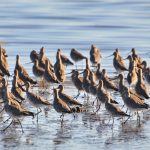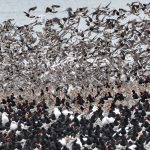Asunción Bay is a relatively small bay located along the northern outskirts of Asunción, the capital of Paraguay. The bay’s water level is regulated by the pulses of the Paraguay River, which floods the bay during the austral autumn and winter, but recedes to expose beaches and mudflats during the austral spring and summer. This provides critical habitat for southbound migratory shorebirds, including the globally Near Threatened Buff-breasted Sandpiper Calidris subruficollis. Regular monitoring by local partner Guyra Paraguay has revealed single-day counts of over 1% of the global population of this species, and highlighted the importance of the bay as a longer-term stopover site for juveniles. Consequently, in 2005 a key part of the bay was declared an Ecological Reserve, and in 2008 the bay was designated a Western Hemisphere Shorebird Reserve Network (WHSRN) site of Regional Importance.
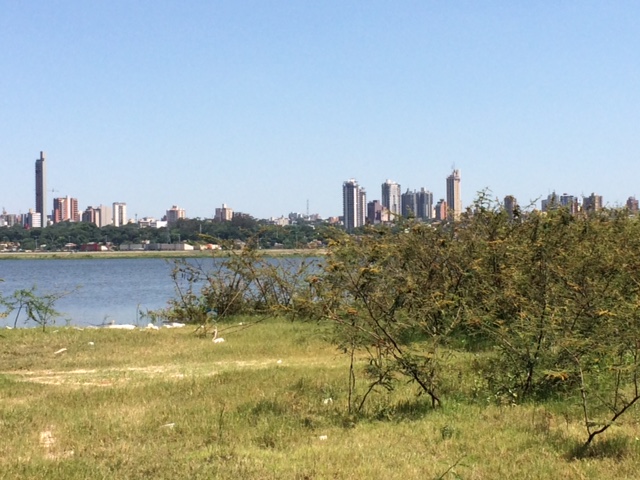
Urban landscapes like Asunción Bay can provide important habitat for shorebirds. Photo: Laura Chamberlin.
In 2010, the development of a bay-side road (a “costanera”) presented important opportunities for the urban population of Asunción to reconnect with the natural heritage of the bay (access was previously very limited). However, dredging to create the embankment for the road destroyed about 70% of the shorebird habitat in the bay, which has significantly reduced shorebird numbers ever since. Thanks to support from the Neotropical Migratory Bird Conservation Act, Guyra Paraguay and the WHSRN Executive Office are now working with the Ministry of Public Works, the Ministry of Environment and the Municipality of Asunción to restore shorebird habitats within the bay, develop a good governance mechanism to facilitate implementation of the reserve management plan, and develop and implement a community engagement strategy to reduce disturbance to shorebirds.
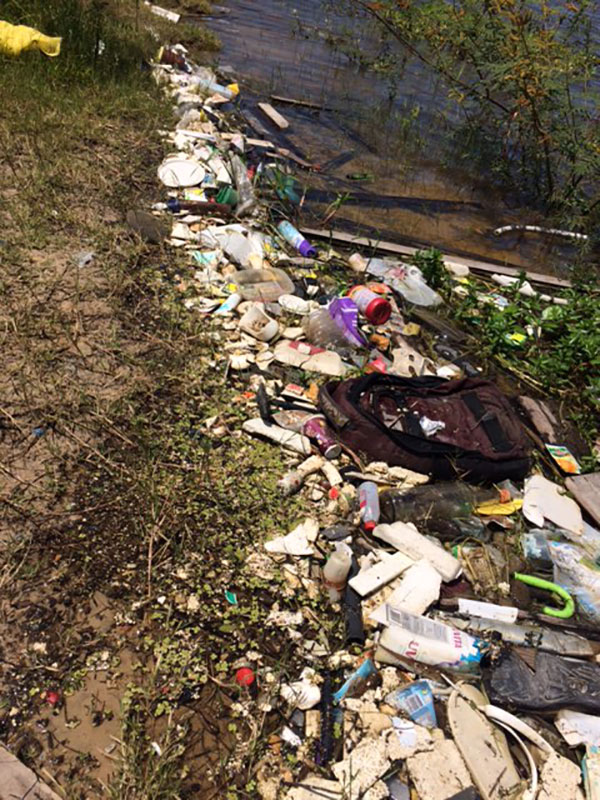
Improper disposal of trash is one of the key problems in Asunción Bay. Photo: Laura Chamberlin.
In early December 2017, Guyra Paraguay and the WHSRN Executive Office delivered a series of workshops in Asunción aimed at building local capacity to reach these goals. Diego Luna Quevedo (Conservation Specialist with the WHSRN Executive Office) began the series on the 5th and 6th of December with a Good Governance workshop. Participants worked together to create a good governance action plan for the area, and agreed to focus on three immediate priorities: 1) Quickly formalize the Management Plan for the reserve; 2) Form a multi-sector Management Committee that will ensure the execution of the Management Plan, and 3) Design a financial mechanism that assures a sustainable source of funding to support the conservation and management of the Reserve.
Diego’s Good Governance workshop was followed by a Habitat Management workshop on 12-13 December, led by Brad Winn (Manomet’s Director of Shorebird Habitat Management). The habitat restoration component of this project seeks to recover 54 hectares (133 acres) of critical habitat for Buff-breasted Sandpiper and other priority shorebirds through re-creation of mudflats and restoration of grasslands and shoreline. To this end, the focus of the Habitat Management workshop was to train local stakeholders in restoration techniques, and to explore specific options from both a theoretical and practical “in the field” perspective. Importantly, Brad emphasized that “while restoration cannot recreate what has been lost, it can help restore the value of the area for shorebirds.”
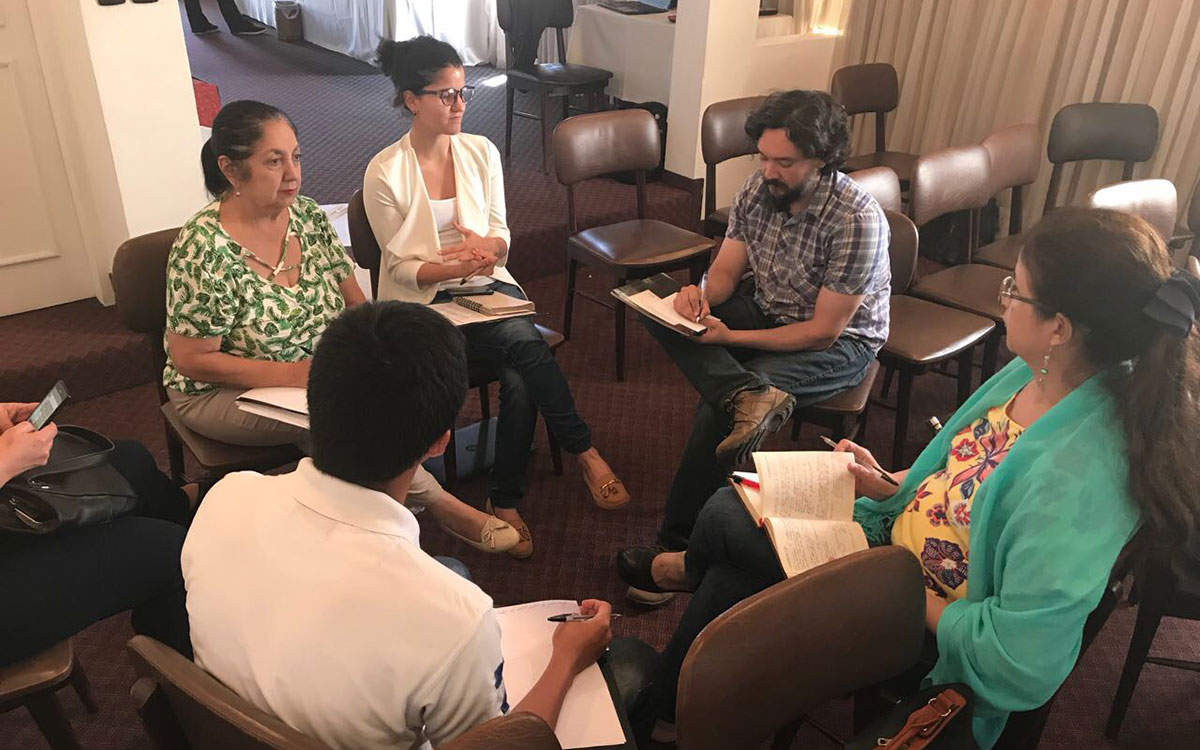
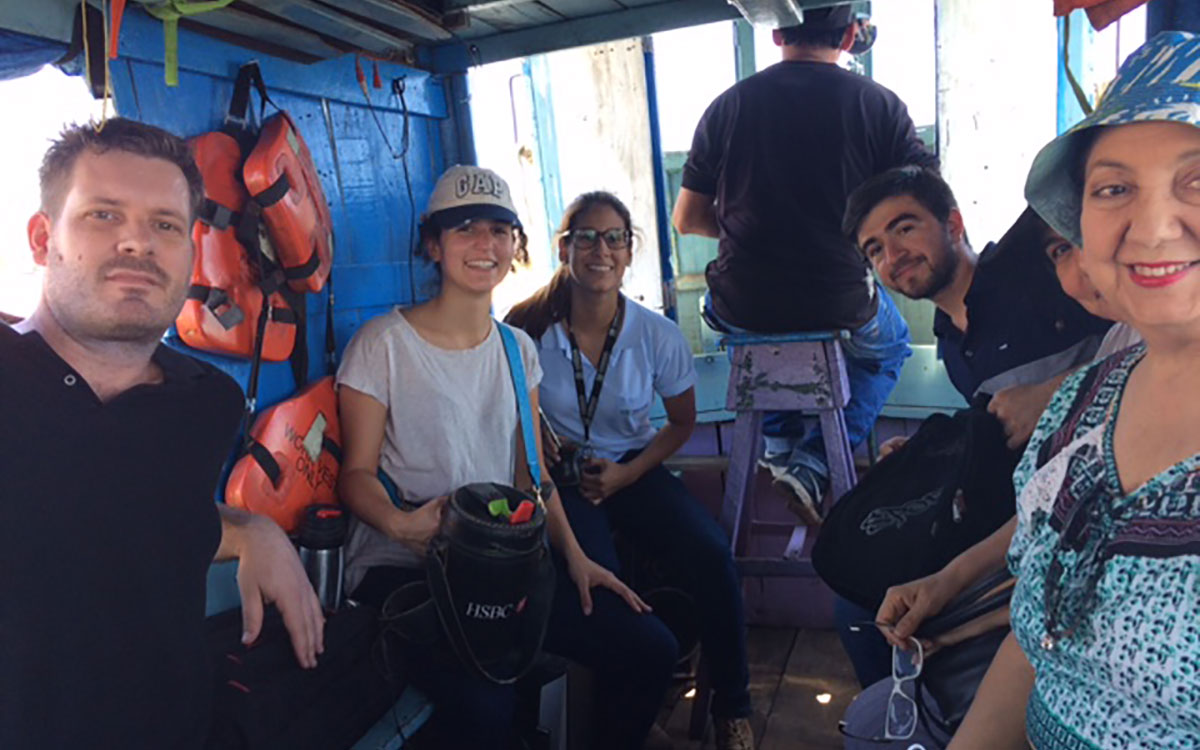
Left: Breakout groups discuss key objectives and stakeholders during the Good Governance workshop. Photo: Diego Luna Quevedo. Right: Workshop participants took a tour of the Bay by boat to view the proposed restoration areas. Photo: Laura Chamberlin.
With good governance and habitat management solutions underway, WHSRN’s Community Engagement Coordinator Laura Chamberlin worked with Guyra Paraguay staff to develop a Community Engagement Plan that utilizes social marketing principles, case studies from other sites, and existing activities around Asunción Bay. Community engagement will increase support for shorebirds and the upcoming habitat restoration projects, and play a critical role in resolving threats at the site.
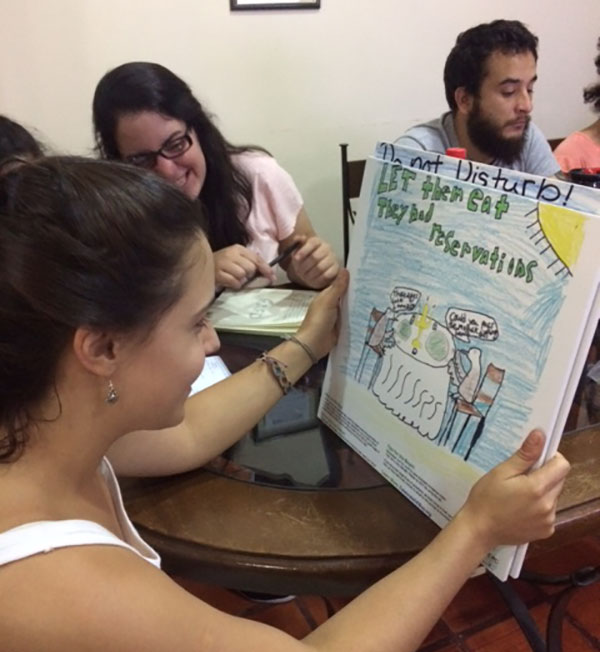
Participants get inspired by student signs from the Delaware Bay. Photo: Laura Chamberlin.
The Community Engagement workshop helped participants hone in on three key objectives. To address the urgent challenge of trash dumping around the Bay, Guyra Paraguay will collaborate with other partners to clean up trash with volunteers, improve infrastructure for trash disposal, and create an education campaign to encourage proper disposal of trash. Second, Guyra Paraguay aims to increase local knowledge and appreciation of shorebirds and Asunción Bay by creating an educational toolkit that will engage students through puppet-theater, hands-on activities, shorebird-based curricula, and art projects to create educational signs along the Bay. The third goal is to build local pride for shorebirds and this unique urban habitat by deepening visitor engagement with the Bay. Guyra Paraguay is planning a concert series in the park, a festival for International Migratory Bird Day, a new wildlife observation area, increased signage in the Reserve, and a Buff-breasted Sandpiper pin, all to inspire support for shorebirds and community unity around the restoration of Asunción Bay.
For more information, please contact Arne Lesterhuis (alesterhuis@manomet.org), Diego Luna Quevedo (diego.luna@manomet.org) or Laura Chamberlin (lchamberlin@manomet.org)
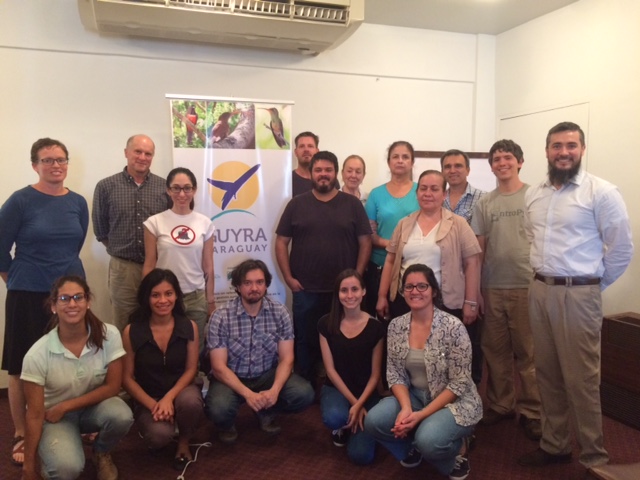
Participants in the Habitat Management workshop. Photo: Diego Luna Quevedo.





